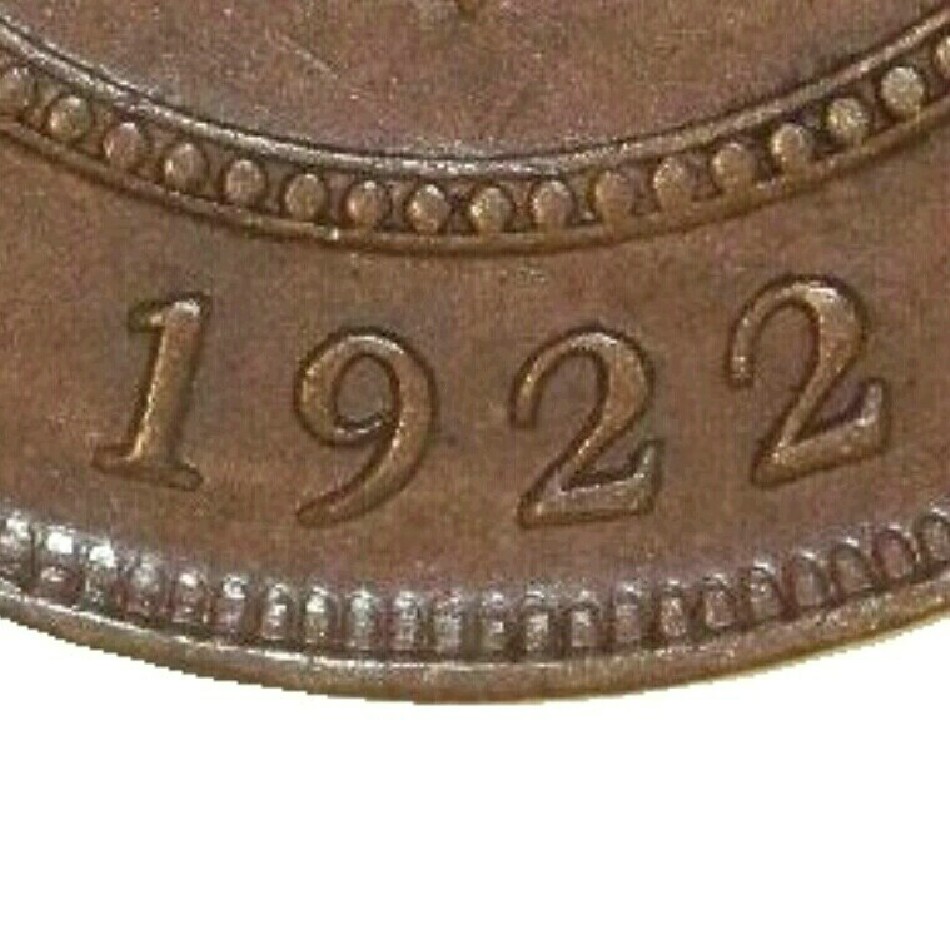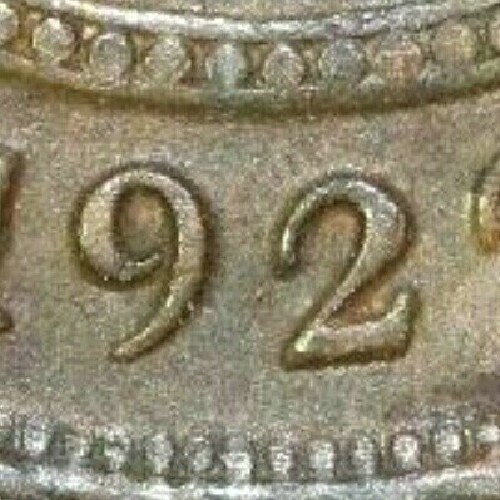



1922 was the first year in which the Perth mint assisted en masse in the production of Australian copper coins. This was due to the strong demand for circulating currency, in particular the lower denominations brought about by the roaring twenties. The Melbourne mint produced a total of 9,529,440 pennies while the Perth mint produced 3,626,400 from November 1921 to February 1923 (Sterling & Currency, 2008) . Of these, 208,800 were struck prior to the receipt of 1922 dies and can be assumed to have been dated 1921. The Perth mint also produced a specimen record striking for the year. Considering the large mintage from the Melbourne mint, and the untested minting process of the Perth mint, finding well struck examples can prove to be quite a challenge, with many pieces having been struck from worn and overworked dies and the rest at less than ideal striking pressures - probably either to increase the working life of the die , or due technical reasons of the Perth mint, as their mint has in the past, only ever struck gold coins, which due to their relative softness, require much less striking pressure. Because of this and due to the high demand for circulating currency in the early 1920s, finding the coin in higher mint state grades can prove to be quite a challenge, even considering the high mintage figure. Distinguishing features include bad die clashes, buckling in the fields, letter distortion, and weakness in the rims (Lever, F, 2015) . At the time of mintage Australian mints were not yet fully established and at times still used dies and tools provided by the London mint; this resulted in a most interesting characteristic for the 1922 penny: variations in the position of the date on the reverse (Lever, F, 2015)


The numeral '9' oscillates between left-tilted, upright, and right-tilted positions.


Other features of the '9' include a thicker appearance or a toenail at the base of the numeral, however, these indicate wear in the die as opposed to a variation.